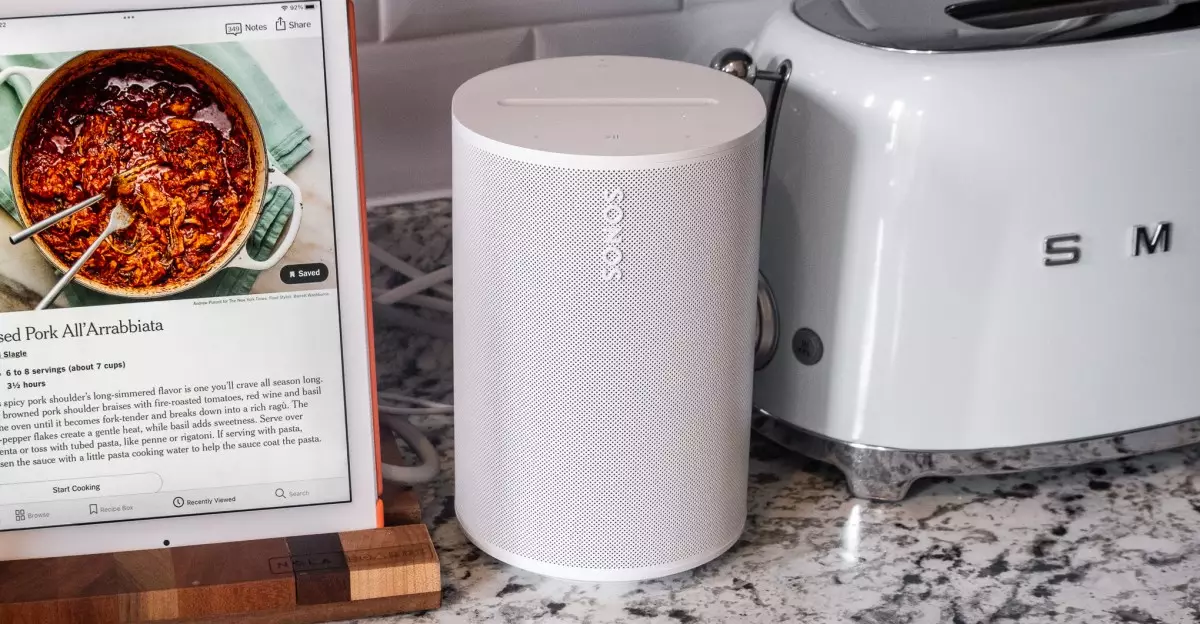In a bid to regain market traction, Sonos has slashed the prices of its Era 100 smart speaker and Ray soundbar to $199. This recalibration is especially noteworthy during a period when hardware sales across the tech industry have stagnated. The Era 100, previously valued at $249, and the Ray, which once boasted a $279 price tag, have undergone significant price adjustments, aimed not only at spurring sales but also at making these products more accessible to a broader consumer base.
The Era 100 represents an evolution in Sonos’ speaker technology. Compared to its predecessors, the Sonos One and Play:1, the Era 100 enhances sound quality with stereo capabilities and integrates modern functionality like Bluetooth support and line-in options. By offering these features at a more palatable price point, Sonos successfully presents the Era 100 as an attractive introduction to its ecosystem, appealing to individuals looking to upgrade their audio experience without breaking the bank.
The Ray: A Compromise on Innovation
Conversely, the Ray soundbar embodies a somewhat different narrative. While it competes in the compact soundbar market effectively, it lacks essential features like HDMI connectivity and Dolby Atmos support, which are becoming standard in today’s premium soundbars. For many consumers, the absence of cutting-edge capabilities may undermine its appeal, despite its reasonable performance for smaller setups. Previous expectations from Sonos management about the Ray’s success have not been met, making this price drop a necessary adjustment rather than a strategic promotion of innovation.
The absence of HDMI and premium surround sound options renders the Ray a suitable choice predominantly for casual users or as supplementary audio for secondary TVs. For enthusiasts seeking a robust home theater experience, the Ray falls short when pitted against competitors that offer superior audio fidelity and immersive features. Consequently, labeling the Ray as merely a “no-frills option” is both accurate and telling of Sonos’ current positioning in that product category.
Navigating Future Challenges
Furthermore, Sonos is in a delicate position when it comes to software reliability. Following a tumultuous year marked by glitches and issues with their mobile app, the company has been actively working to bolster user experience through regular updates. Their transparency about ongoing fixes, highlighted by the public Trello board, showcases a commitment to improvement, albeit prompted by prior missteps.
The recent cancellation of a highly anticipated streaming video player indicates a strategic pivot, as Sonos refocuses its efforts towards fine-tuning existing products rather than venturing into new markets. This move could be seen as a step back, but it also reflects an understanding of current consumer needs—a re-emphasis on delivering quality and reliable performance over chasing after the next big trend.
In the backdrop of fierce competition in the audio technology landscape, Sonos’ pricing strategy signals a recognition of changing consumer behavior and market dynamics. Whether this will reinvigorate sales remains to be seen, but for now, the adjustments provide an invaluable opportunity for new customers to engage with Sonos’ offerings without the weight of hefty price tags.

